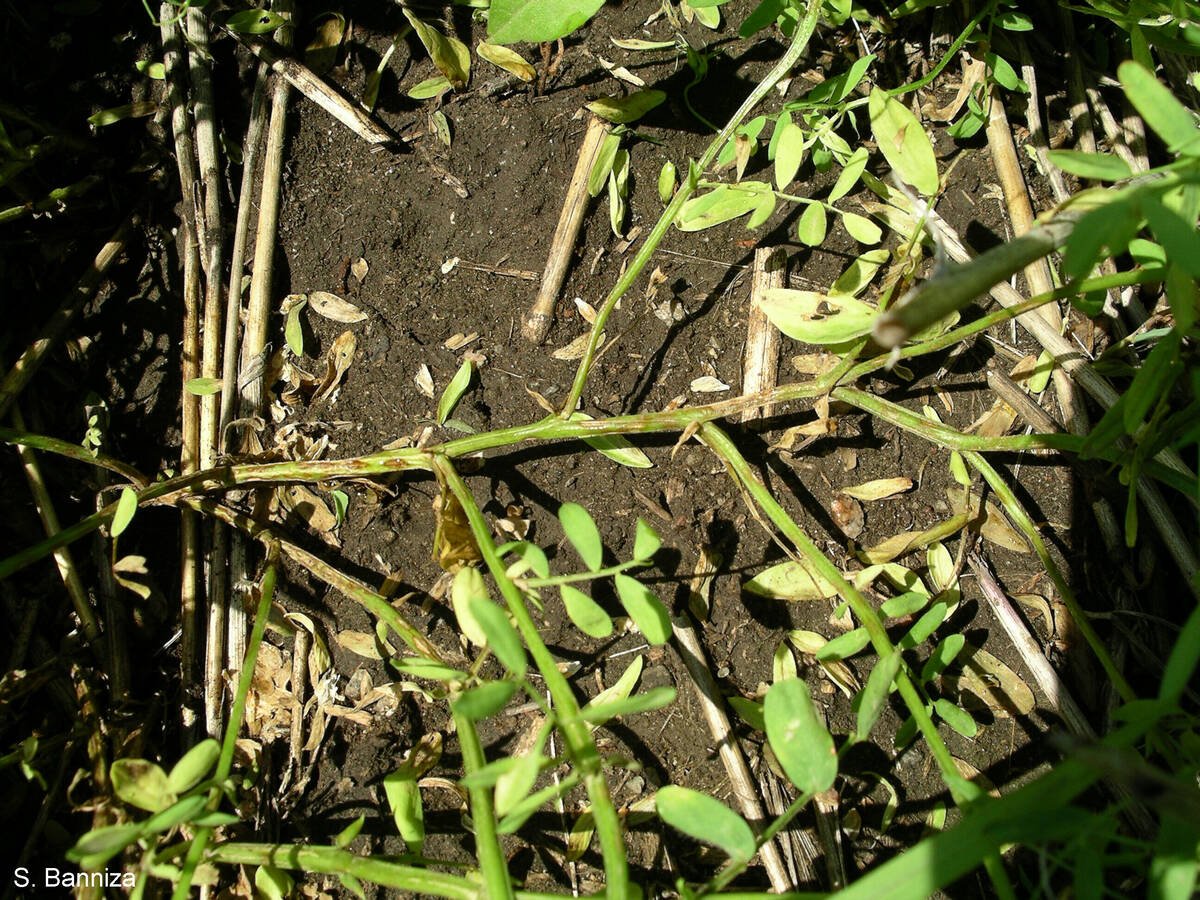SASKATOON – They look better. In a nutritional sense they taste better. And there is a bonus for the environment.
Solar-dried hay bales come out far ahead of their field-dried counterparts, a study by a team of engineering professors at the University of Saskatchewan has found.
The research group built and tested a commercial solar-powered hay dryer and found dramatic improvements in hay quality.
Most hay across Canada is dried in the field, but weathering can lead to losses in both quality and yield.
Read Also

Anthracnose resistant lentils within reach
The risk that anthracnose poses to lentils continues to be high priority for the pulse sector.
Research engineer Edwin Arinze said the high-quality hay produced in solar-powered drying systems can be sold on the export market for nearly three times the price of field-dried hay, $150 per tonne compared to about $60.
In economic terms, Arinze said a commercial outfit producing about 500 tonnes of hay annually using solar energy over natural gas or propane would save about $1.50 per tonne in drying costs.
The solar hay dryer consists of a solar collector with an ultra-violet resistant transparent fiberglass cover over aluminum absorber plates. The plates are painted black for maximum solar energy absorption.
An insulated duct connects the solar collector to the drying bin where the bales are stacked and covered with a heavy sheet of plastic. The bin floor is a perforated metal grate.
A fan connected to the duct under the bin draws air through the solar collector, allowing it to be heated 10-15 degrees C above the outside temperature.
Hot air from the collector flows through the duct to an open space above the bales.
When the fan is turned on, it sucks the plastic wrap tightly around the bales so heated air is pulled through the stack. Then it passes through the perforated floor and into the outside air.
Bale before quality loss
Hay put through this process should be baled early at 25-40 percent moisture content before any quality or yield losses occur.
Arinze said it normally takes about 20 days to dry hay from 30 – 40 percent moisture to 12-15 percent. The solar-powered prototype dried 60 bales in three days during sunny July conditions, resulting in higher quality hay.
Solar energy methods are ideal for Saskatchewan, where there are more hours of bright sunshine than other provinces.
The solar system uses negative pressure air circulation, a plastic cover for effective sealing and a two-metre high limit on the stack to avoid non-uniform air distribution, airflow losses and spoilage.
Looks good, tastes great
The hay comes out looking green, with a significantly higher nutritional quality, said Arinze.
“Most hay dried completely in the field usually shows considerable color changes and degradation in nutrient quality,” he said. “But the hay produced by the dryer remained green and attractive after drying.”
Schoenau said these qualities will make solar dried hay more attractive to the export market.
“This won’t be for the everyday cow operation, but when you’re looking at the export market, particularly the United States and Pacific Rim countries, a guaranteed higher quality product with a better nutritional value is necessary,” said Schoenau.
The dryer can be adapted for grain by attaching the insulated duct to the fan inlet of a grain bin.
Schoenau and Arinze say there is a trend toward solar-powered drying systems.
“Natural gas, propane and diesel oils have been extensively used for hay and grain drying, but high energy consumption, rising costs, questionable availability of fossil fuels and the obvious environmental concerns have led to a higher interest in solar energy,” Arinze said.
The study, jointly funded by the university and the Canada-Saskatchewan Agriculture Green Plan agreement, will conclude with a final report this summer.
















